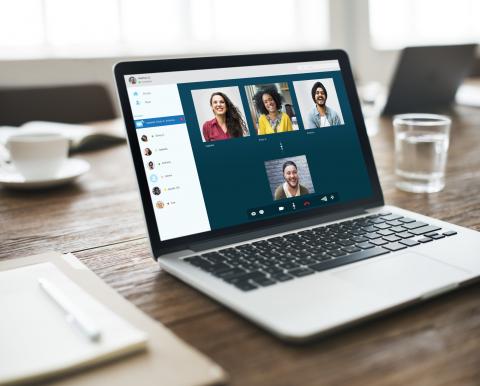6 Tips for Video Conferencing Like a Pro
Oct 06,2020
Today, 86% of businesses are using video conferencing to conduct job interviews. The coronavirus pandemic has forced a lot of companies to go more digital, but the truth is, we were always moving in that direction anyway.
Not only are interviews moving to video chats, but so are other business functions, such as meetings with coworkers and clients. Because of that, you should make sure your video conferencing skills are up to par.
To help you out, here are 6 tips for video conferencing you need to know. That way, you can have a smooth and professional experience.
1. Get to Know the Programs Beforehand
It won't do you any good to download video conferencing software and then not try it out beforehand. While you might be familiar with other similar programs, each one will have its own buttons and functions. You don't want to be figuring them all out while on a call with a potential employer or client, or worse, with a college interviewer.
Right after downloading video conferencing software, make sure you install and open it right away. Take some time to set up your camera, check if your microphone's working, and play around with the buttons.
Most programs should have a test function. You can use that, and/or you can ask a friend, family member, or coworker to get in a call with you so you can test things out in a real call.
If you have time, you'll want to learn the shortcut commands for your software. This can make life a lot easier and cut down time fumbling around with the mouse during your call.
2. Choose a Good Call Spot
Considering 42% of the US labor force works from home full-time, chances are, you do as well. You might think your home office desk is the perfect place for a call; you work there, after all.
However, you have to carefully consider your call spot.
First of all, it should have good WiFi reception. There's nothing worse than a dropped conference call, so you must be an area where you're confident you can get a good signal.
Second of all, you need to think about what's behind you. The view in front of you might be great, but what's behind you?
If it's something like a table full of papers and other clutter, then that won't appear very professional. What you can do is get a big piece of fabric that's plain and hang it on your wall for a simple background.
You'll also want to consider the lighting. If your home office is dimly lit, this may cause issues during a conference call.
While testing your camera, you'll want to see if the lighting suffices. If not, think about bringing in additional lights or moving to a different part of the house for the call.
3. Carefully Choose Your Outfit
Just because you're working from home doesn't mean you should get on video conferences in casual wear. Of course, while you're off the call, you can wear whatever you want, but when you get on the call, make sure you're dressed as professionally as you would for the office.
For many, they just change their tops and wear something comfortable on the bottom, such as sweatpants.
But if you don't want any mishaps and wish to cover your bases, it may be best to wear professional clothing from head to toe. You never know if there's an emergency or unexpected visit from someone. And you don't want everyone to see your unprofessional clothing when you get up to answer the door.
4. Make Good Use of the Mute Button
Working from home comes with its benefits, but it also has its drawbacks. Maybe you're in a call while your neighbor's doing renovations or maybe your dog just won't stop barking for some reason. These constant noises can be very distracting and can make you look unprofessional.
Make it a habit to automatically mute your microphone as soon as you get into a call. Many times, people forget it's on and start mumbling to their spouses or rustling through their papers. All this background noise can compete with everyone else on microphones and drown out what they're trying to say.
So one of the best video conferencing tips is to mute yourself as much as possible. Not only will this streamline the call, but it'll also make you appear more thoughtful and professional.
5. Clear Your Desk of Distractions
For the best video conferencing experience, you'll want to clear your desk and the surrounding areas of distractions. When you're viewing people on a screen, it can be harder to stay focused than with an in-person meeting.
If you want to make sure your mind doesn't wander, then don't give yourself any temptations. Put away that Rubik's Cube and any paper that you could doodle on.
Also, a clearer desk leads to a clearer mind. So take a brief moment to remove all clutter before your video call to improve your focus.
6. Check That Everything Works Before Your Call
If you've followed the tips from above, then your video conferencing software should be working correctly at all times. But as we all know, technology has a tendency to go haywire, especially during important moments.
So you can never be too careful. Even if your program was working just an hour ago, it doesn't hurt to double-check that everything's in its place a few minutes before your scheduled call.
You can either get in a test call or get someone to volunteer for a test call. Either way, this small reassurance that everything's fine can also help calm your nerves before a big video conference.
Use These Tips for Video Conferencing
With our tips for video conferencing, you'll now be able to have the best experiences on all your calls. These tips for effective video conferencing will ease your stress and anxiety. As a result, this will allow you to truly focus on the video chat and increase your chances of success.
Want some more tips on building your career? Then make sure you read this article!





